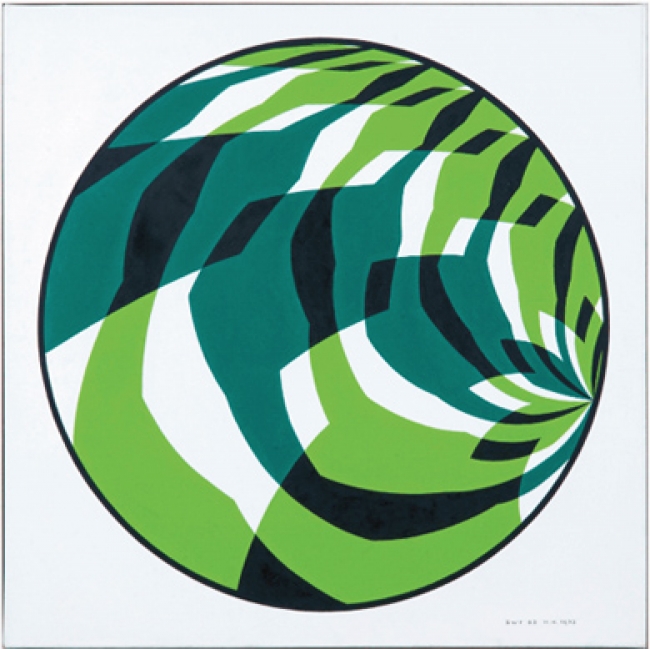Descripción de la Exposición
On the occasion of the exhibition dedicated to Swiss artist Hans Hinterreiter(Winterthur 1902–Ibiza 1989), presented first at the Museo Fundación Juan March in Palma (February 21–May 26, 2018) and subsequently at the Museo de Arte Abstracto Español in Cuenca (June 8–October 21, 2018), Punto y Raya Festival (www.puntoyrayafestival.com) has prepared a program of experimental films in collaboration with the Fundación Juan March. The films selected for this series are intended, on the one hand, to contextualize Hinterreiter’s body of theory by relating it to experimental abstraction in motion (illustrated with contemporaneous examples by artists such as Man Ray, Marcel Duchamp and Len Lye), and on the other, to reconstruct a view of what his animated work, which, for various reasons, never materialized, might have been like over the course of his career.
In the 1930s Hinterreiter had already developed an artistic orientation of his own, which in many respects closely paralleled Zurich Concrete Art and in others was original and unique in its interest in movement and space. Hans Hinterreiter had two main influences: firstly, the writings of Wilhelm Ostwald on the theory of color and form, which led him to continue and perfect the work of his great predecessor on the systematic use of color and the development of highly complex compositional designs, and secondly, the sophisticated Hispano-Islamic tile work he discovered during his visit to the Alhambra in 1934, which confirmed many of his experiments on construction and composition based on the study of geometry, a key element in his work.
During these years, Hinterreither worked with nearly five thousand transparent templates, which he designed to transfer his geometric patterns, generated from basic shapes, to the canvas. With great precision, he used color planes superimposed by addition, intersection, or subtraction, laying out the complicated pattern rhythmically. In doing so, Hinterreiter deployed techniques still used today by traditional hand-drawn animators and designers. However, the infinite possibilities of continuation that this process allowed him came up against limitations in the boundary of the canvas, and these were a source of both creative inspiration and frustration for the artist. It was at this point that a remarkable idea appeared in Hinterreiter’s writings, which he called a "play of transformation of color and form", a kind of "expanded painting" that involved setting the projections of his geometric patterns in rhythmic motion, accompanied by music.
The proposed program of films starts from this context: on the one hand, from Hinterreiter’s interest in animated film, and on the other, from the set of practices that have explored abstract imagery in film from the avant-gardes to the present day. Indeed, since 1910 visual artists, especially Cubists and Futurists, had recreated the effect of movement in their works by juxtaposing multiple viewpoints on the canvas. And the burgeoning cinema of those early decades was beginning to be used as the natural medium for expanding the explorations conducted by avant-garde artists.

Exposición. 08 jun de 2018 - 21 oct de 2018 / Museo de Arte Abstracto Español / Cuenca, España

Formación. 08 may de 2025 - 17 may de 2025 / Museo Nacional Centro de Arte Reina Sofía (MNCARS) / Madrid, España